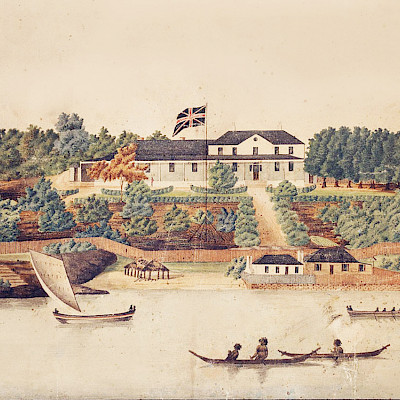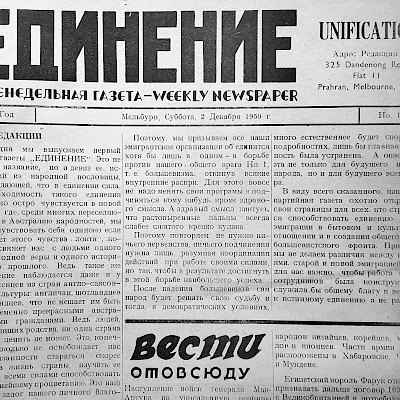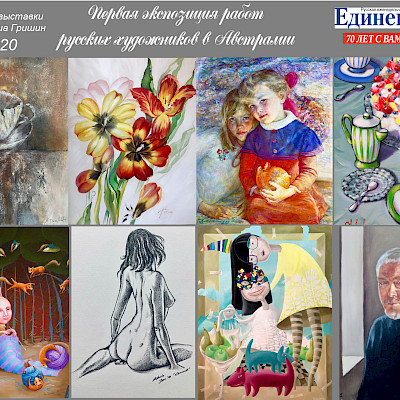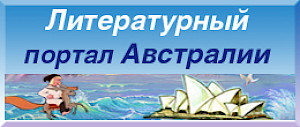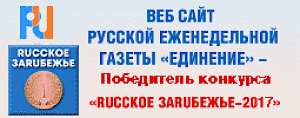December 2020 marked the 70th anniversary of the publication in Melbourne of the first issue of the Russian weekly newspaper “Edinenie” of which Oleg Vladimirovich Perekrestov became executive editor. Alongside him in a small, friendly circle of people who created the first issues of “Unification”, a special place belongs to Vladimir Pavlovich Komarov. He was the paper’s first executive (technical) editor. Today’s story is devoted to him.
Vladimir Pavlovich was born in the noble Komarov family’s estate “Myasoyedovo” in the Tula province. By family tradition he studied at the First Moscow Cadet Corps, and then entered the Pavlovsk Military School in St Petersburg, graduating as a military engineer. He married Maria, the younger daughter of Moscow nobleman Captain (subsequently Major-General) Yakov Gennadievich Dudyshkin. The Komarovs had three children: the eldest was daughter Irina, followed by son Pavel (who died of blood poisoning in the White Guard refugee camp on the Greek island Proti aged 9) and younger daughter Natalia.
By the beginning of the First World War Vladimir Pavlovich commanded the Fifth Pontoon Battalion in Kiev. When war was declared, he went immediately to the front lines and was awarded the Order of St Vladimir with Swords III grade “For Bravery.” He fought with the White Army until the very end under the command of General P.N. Wrangel.
After the evacuation of the White Army, he reunited with his family, and they lived in Yugoslavia until the Second World War. In those years Vladimir Pavlovich took an active role in the Russian All-Military Union, and was published in the Russian émigré press, including “thick” literary journals such as the Paris-based “Renaissance” (Vozrozhdenie) and Roman Gul’s “New Journal” (Novy Zhurnal).
Like hundreds of thousands of White Russian refugees, the family left Yugoslavia on foot in the face of the communist offensive, and after months of wandering around war-devastated Europe, ended up in the Moenchehof refugee camp in the American zone of occupied Germany. A devout Russian Orthodox Christian, Vladimir Pavlovich was a lay representative in the work of the Synod of the Russian Orthodox Church Abroad in Germany.
In 1948 daughter Irina (married name Halafoff) emigrated to Australia with her husband Konstantin Konstantinovich and son Sergei. The Halafoff family then sponsored Vladimir Pavlovich, his wife, daughter Natalia (married name Berdnikova), son-in-law Gleb and 6-year-old granddaughter Elena to come to Australia under the family reunification program. They arrived in Australia in early 1950 and joined the fledgling Russian community in Melbourne. In addition to the community’s first concern – securing premises for the conduct of church services – a number of socia, public issues arose, including the initiative led by Oleg Vladimirovich Perekrestov to create a regular Russian-language newspaper.
Thus, the still existing “Edinenie” was born under the “hands on” leadership of executive editor Vladimir Pavlovich Komarov.
Sadly, in June 1952, Vladimir Pavlovich was hit by a car that broke out of a line of vehicles awaiting a change of traffic lights on the pedestrian crossing at the intersection of Dandenong and Orrong Roads. He died a week later on 13 June, before being able to witness the birth of his second granddaughter, Tatiana, born of Natalia’s second marriage to Yuri Konstantinovich Amosow, who succeeded Vladimir Pavlovich as the paper’s editor for many years.
Alyona Kojevnikov








